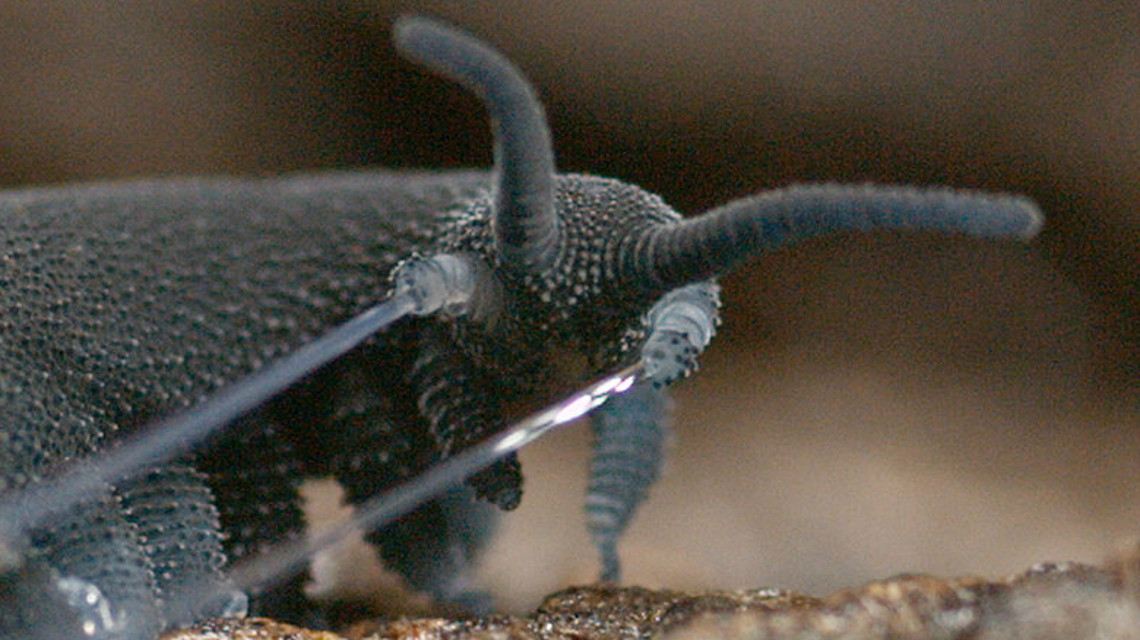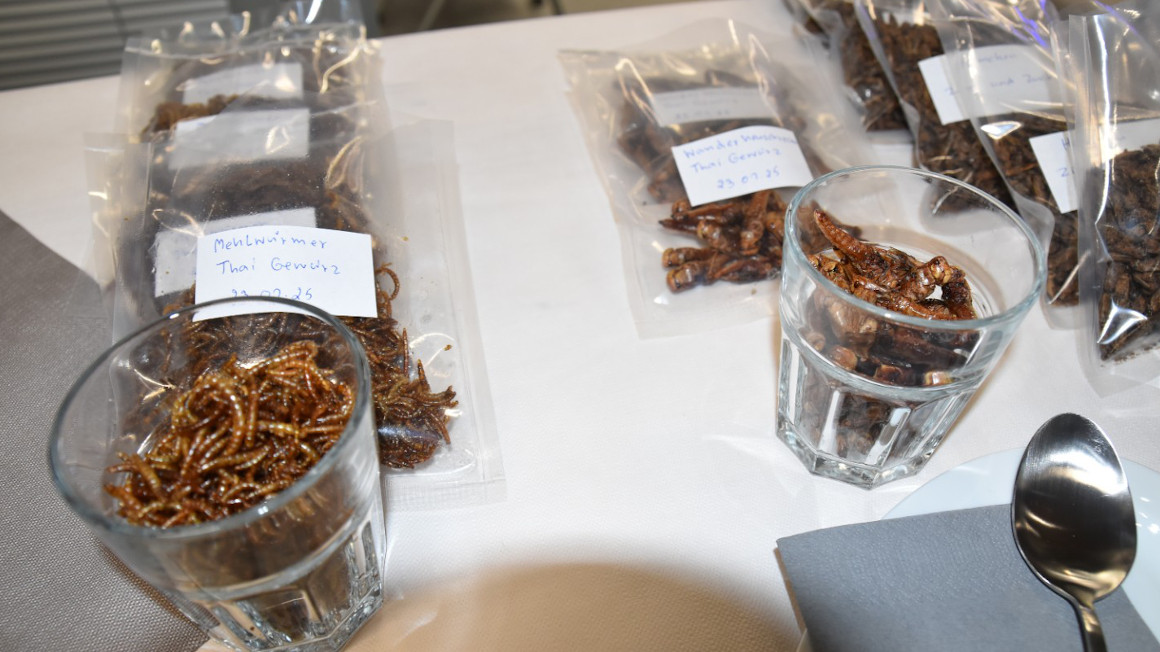Slime that turns into deadly fibres
Researcher in Kassel and Potsdam identified shear forces as the mechanism that turns the slimy secretion of velvet worms into stiff polymer fibres, which can even be recycled.

Many animals provide ingenious inspirations for new materials and their production. Spiders, for instance, produce silk that withstands enormous forces and which has since been artificially generated in a laboratory setting. Similarly, mussels secrete byssus threads that can attach strongly to any material underwater – a long sought-after property. Velvet worms, small animals somewhere between an earthworm and a caterpillar, are equipped with an equally unique material: a sticky liquid that wards off enemies or catches prey. Researchers at the University of Kassel and the Max Planck Institute of Colloids and Interfaces in Potsdam now published their results in the journal “Nature Communications”, where they describe the key mechanisms that turn the sticky slime into deadly stiff fibres: A struggling animal encompassed with the slimy threads generates shear forces that cause the threads to harden. Moreover, the fibres can be dissolved in water only to form the same threads again from recovered slime later on.
Protein fibres with liquid sheath
The researchers discovered that proteins and lipids, which make up the slimy liquid, combine to form tiny globules. “Velvet worms produce the protein and fat molecules as well as other components separately”, Alexander Bär, a doctoral student at the University of Kassel explains. “Outside the gland cells, the nanoglobules then form independently to create the thread-forming and adhesive properties.” The globules are formed with are uniform in shape and always around 75 nanometres in diameter.
Velvet worms shoot their slimy weapon at their prey or foe through two glands located on either side of their head by means of muscular contractions. “As soon as the prey begins to struggle, shear forces act on the slime to rupture the nanoglobules,” Bär says. Vibrational spectroscopy studies in Potsdam showed that proteins and fatty acids separate into different layers during this process: Proteins form long fibres in the interior of the slime, while the lipid and water molecules are displaced to the outside and form a sheath. The researchers also found that the protein strand inside has a tensile stiffness similar to that of Nylon®.
Polymerized threads can be dissolved and recycled
Stephan Schmidt at the Max Planck Institute of Colloids and Interfaces in Potsdam analysed the nanostructure of the slime. A research group headed by biochemist Matt Harrington in the Biomaterials Department of the Potsdam Institute focused on the chemical composition and molecular processing. Together they were able to show that the polymerized slime threads can be dissolved in water again within a few hours of drying. “The astonishing thing for us was that the proteins and lipids evidently mix again to form the same nanoglobules we had already found in the original slime,” Matt Harrington says. The newly formed protein-lipid globules were even similar in size to those in the natural secretion.
Moreover, the sticky threads can be drawn again from recovered slime. And the recycled threads behaved exactly like freshly secreted velvet-worm liquids under the influence of shear forces would: they hardened. Intriguingly, this is all accomplished with biomolecules and at normal ambient temperatures. Velvet worms could therefore serve as a model for manufacturers of synthetic polymers and could hence teach them a lot about the sustainable production of synthetic materials.
jmr


